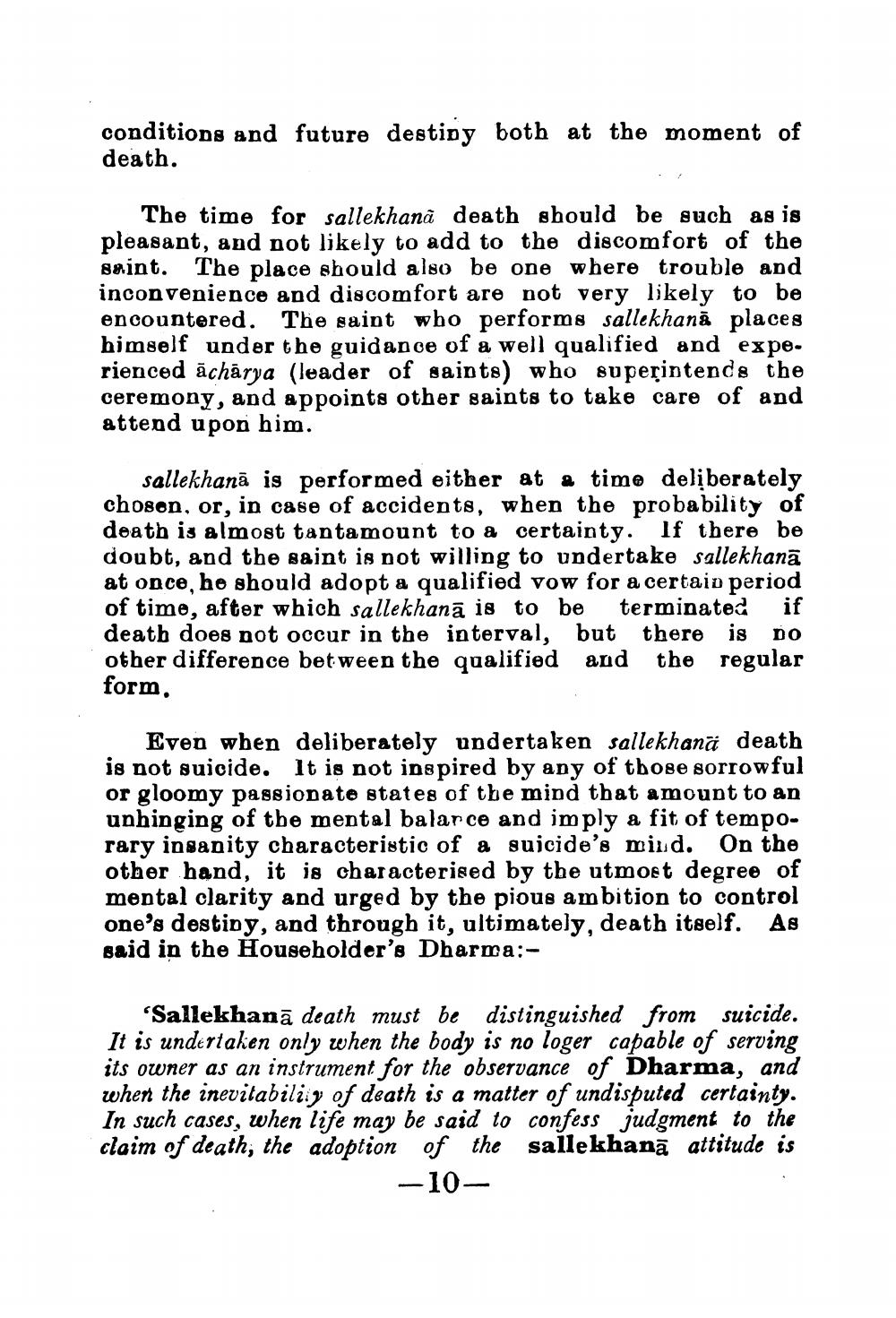________________
conditions and future destiny both at the moment of death.
The time for sallekhanà death should be such as is pleasant, and not likely to add to the discomfort of the saint. The place should also be one where trouble and inconvenience and discomfort are not very likely to be encountered. The saint who performs sallekhană places himself under the guidance of a well qualified and expo. rienced achārya (leader of saints) who superintends the ceremony, and appoints other saints to take care of and attend upon him.
sallekhanā is performed either at a timo deliberately choson, or, in case of accidents, when the probability of death is almost tantamount to a certainty. If there be doubt, and the saint is not willing to undertake sallekhanā at once he should adopt a qualified vow for a certaid period of time, after which sallekhanā is to be terminated if death does not occur in the interval, but there is DO other difference between the qualified and the regular form.
Even when deliberately undertaken sallekhanā death is not suicide. It is not inspired by any of those sorrowful or gloomy passionate states of the mind that amount to an unhinging of tbe mental balarce and imply a fit of tempo. rary insanity characteristic of a suicide's mind. On the other hand, it is characterised by the utmost degree of mental clarity and urged by the pious ambition to control one's destipy, and through it, ultimately, death itself. As said in the Householder's Dharma:
'Sallekhanā death must be distinguished from suicide. It is undertaken only when the body is no loger capable of serving its owner as an instrument for the observance of Dharma, and when the inevitabiliiy of death is a matter of undisputed certainty. In such cases, when life may be said to confess judgment to the claim of death, the adoption of the sallekhanā attitude is
-10




